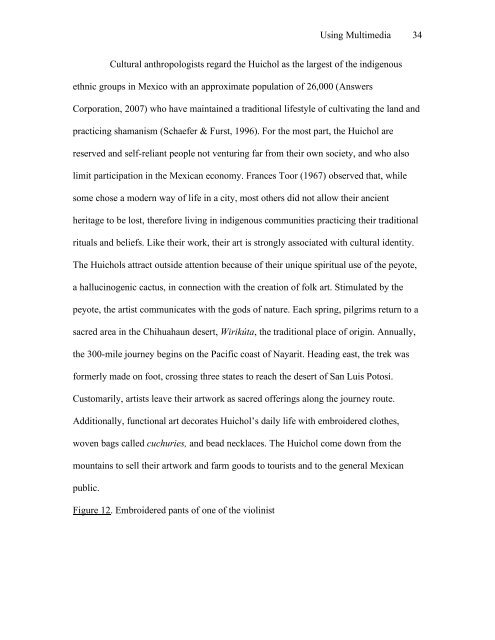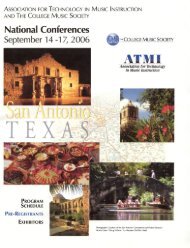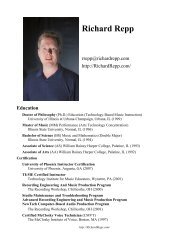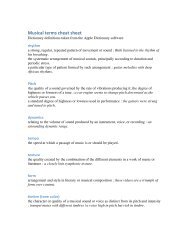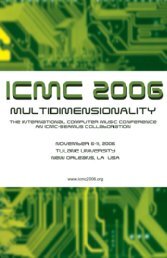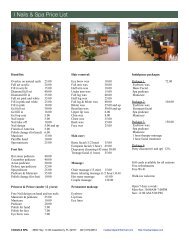Using Multimedia to Expand the Audience of ... - Richard Repp
Using Multimedia to Expand the Audience of ... - Richard Repp
Using Multimedia to Expand the Audience of ... - Richard Repp
Create successful ePaper yourself
Turn your PDF publications into a flip-book with our unique Google optimized e-Paper software.
<strong>Using</strong> <strong>Multimedia</strong> 34<br />
Cultural anthropologists regard <strong>the</strong> Huichol as <strong>the</strong> largest <strong>of</strong> <strong>the</strong> indigenous<br />
ethnic groups in Mexico with an approximate population <strong>of</strong> 26,000 (Answers<br />
Corporation, 2007) who have maintained a traditional lifestyle <strong>of</strong> cultivating <strong>the</strong> land and<br />
practicing shamanism (Schaefer & Furst, 1996). For <strong>the</strong> most part, <strong>the</strong> Huichol are<br />
reserved and self-reliant people not venturing far from <strong>the</strong>ir own society, and who also<br />
limit participation in <strong>the</strong> Mexican economy. Frances Toor (1967) observed that, while<br />
some chose a modern way <strong>of</strong> life in a city, most o<strong>the</strong>rs did not allow <strong>the</strong>ir ancient<br />
heritage <strong>to</strong> be lost, <strong>the</strong>refore living in indigenous communities practicing <strong>the</strong>ir traditional<br />
rituals and beliefs. Like <strong>the</strong>ir work, <strong>the</strong>ir art is strongly associated with cultural identity.<br />
The Huichols attract outside attention because <strong>of</strong> <strong>the</strong>ir unique spiritual use <strong>of</strong> <strong>the</strong> peyote,<br />
a hallucinogenic cactus, in connection with <strong>the</strong> creation <strong>of</strong> folk art. Stimulated by <strong>the</strong><br />
peyote, <strong>the</strong> artist communicates with <strong>the</strong> gods <strong>of</strong> nature. Each spring, pilgrims return <strong>to</strong> a<br />
sacred area in <strong>the</strong> Chihuahaun desert, Wirikúta, <strong>the</strong> traditional place <strong>of</strong> origin. Annually,<br />
<strong>the</strong> 300-mile journey begins on <strong>the</strong> Pacific coast <strong>of</strong> Nayarit. Heading east, <strong>the</strong> trek was<br />
formerly made on foot, crossing three states <strong>to</strong> reach <strong>the</strong> desert <strong>of</strong> San Luis Po<strong>to</strong>sí.<br />
Cus<strong>to</strong>marily, artists leave <strong>the</strong>ir artwork as sacred <strong>of</strong>ferings along <strong>the</strong> journey route.<br />
Additionally, functional art decorates Huichol’s daily life with embroidered clo<strong>the</strong>s,<br />
woven bags called cuchuries, and bead necklaces. The Huichol come down from <strong>the</strong><br />
mountains <strong>to</strong> sell <strong>the</strong>ir artwork and farm goods <strong>to</strong> <strong>to</strong>urists and <strong>to</strong> <strong>the</strong> general Mexican<br />
public.<br />
Figure 12. Embroidered pants <strong>of</strong> one <strong>of</strong> <strong>the</strong> violinist


